Most mountain bike riders are familiar with the commonly available mountain bike wheel sizes: old school 26in wheels, fun and playful 27.5in and the now de-rigour 29in wheels seen on enduro and downhill race machines.
Outliers are the 24in wheels seen on the likes of Danny MacAskill’s trials bike and the truly gigantic 36in wheels used on wild custom-built steel hardtails.
But what if we could have our cake and eat it too? The penny and the bun?
We sent Will Soffe, who has been racing and working on mountain bikes since he was 12, and who now competes in the elite downhill category, to find out what's faster – a 29er or a mullet bike? Is it really possible to get the best of both worlds?
Meet the tester | Will Soffe
Will Soffe has experienced World Cup racing from both sides of the tape, lining up in the gate at Mont-Sainte-Anne in 2014 and then working a full season as a mechanic for Trek Factory Racing.
More recently, he’s worked at Mojo Suspension, where he first experimented with asymmetric wheels. He’s also a coach for British Cycling and runs bike set-up clinics with skills coaching company +3 MTB.
And, of course, he’s a tech geek!

What is a mullet bike?
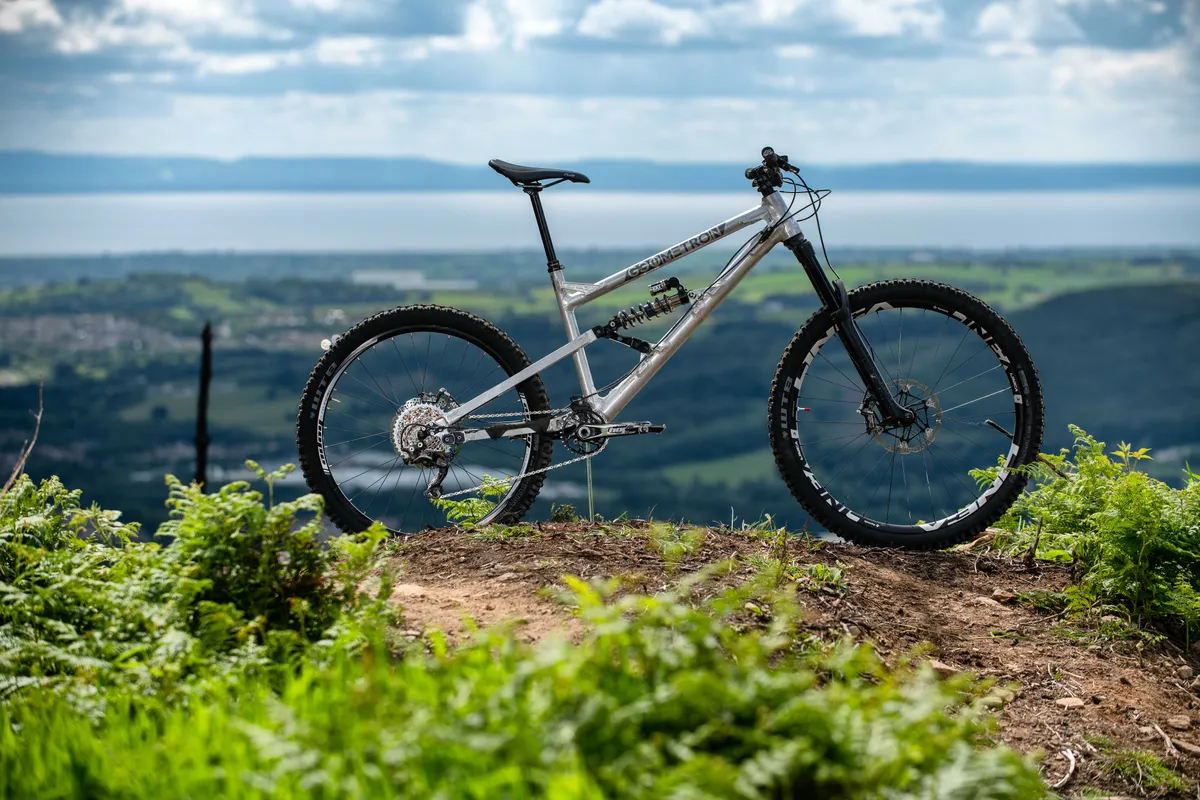
Mullet bikes use different sized wheels, most commonly a 29in front wheel paired with a 27.5in wheel. For those not au fait with bad haircuts, the name is a reference to the once-popular uneven haircut, short on the front and sides, long at the back.
Mullet bike proponents claim the 29in wheel offers rolling speed and better bump roll-over at the front, with the 27.5in wheel bringing sharp handling at the rear. Business at the front, party at the back, in other words.
It's worth remembering that mixing up wheel sizes on two-wheeled machines is nothing new. Remember the penny-farthing?
When it comes to off-road riding, the godfather of mountain bikes, Keith Bontrager, created the 69er back in 2009 – a Trek hardtail with a 29in front wheel and a 26in rear wheel.
Plus, who can forget Specialized’s precursor to the Demo, the Big Hit, with its 26in front and 24in rear wheel.
But it wasn’t until 27.5in wheels appeared that brands really started finding the potential of mixing wheel sizes, with specialist companies Foes and Liteville offering bikes with a 29in wheel at the front and a 27.5in wheel on the back before other brands had even considered the idea.
Racing the mullet bike | A history lesson
Other than a few maverick manufacturers, it took time for mullet bikes to be proven in the fertile hotbed of MTB racing.
Cycling’s world governing body, the UCI, initially ruled that both wheels must be the same size, regardless of the discipline, in order to prevent innovative bike designers utilising the aerodynamic advantages of running a smaller front wheel in the velodrome.
World Cup downhill teams argued these rules weren't relevant to off-road disciplines and, after pressuring the UCI for a rule change in 2017 and 2018, the restriction was lifted in 2019, allowing mountain bike teams to run asymmetric wheels on their bikes.

This led to plenty of pre-season speculation about how well the mullet might work and what the advantages might be.
It didn’t take long for Martin Maes to answer that question, riding his mullet-equipped GT Force to the top step of the podium at the opening round of the Enduro World Series in Crankworx Rotorua.
That was quickly followed by Finn Iles (Specialized) and George Brannigan (GT) finishing second and third in the downhill race respectively on mullet bikes.
Then, at the first round of the downhill World Cup in Maribor, Slovenia, it happened again with previously vocal 29er hater Loic Bruni taking the win and Danny Hart finishing in second, both on asymmetrically wheeled bikes.
The doubters had been silenced and clearly there was some sort of advantage (or at the very least, no disadvantage) to mixing up wheel flavours.
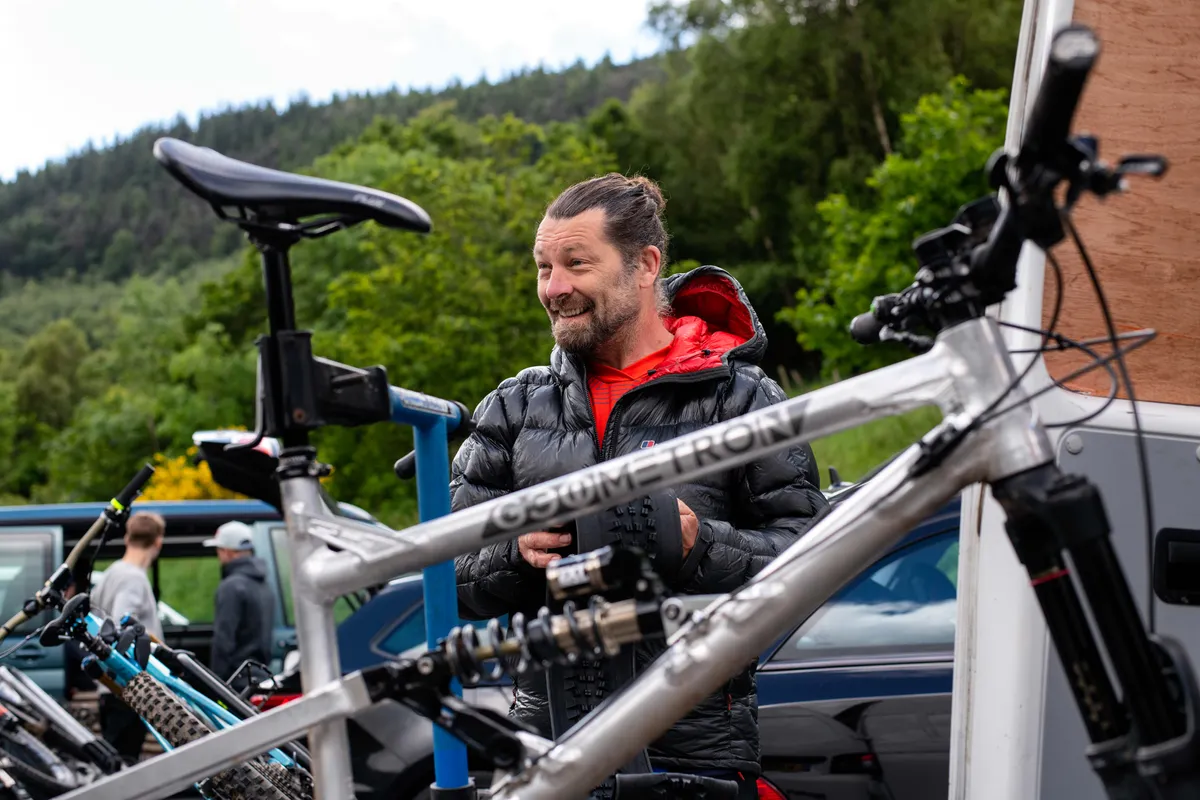
In downhill, the popularity of the mullet bike increased during the 2019 race season and, although the 2020 season is currently on hold due to the Covid-19 virus outbreak, some teams and their riders, like Santa Cruz Syndicate riders Loris Vergier and Luca Shaw, have announced their intentions to ride a mullet setup for the foreseeable future.
https://www.facebook.com/MBUKMag/posts/10156789823457016?__tn__=-R
Suspension expert Chris Porter on early mullet bikes
Chris Porter from Mojo Rising is arguably one of the most knowledgeable men in mountain biking.
Mojo Rising specialises in suspension tuning and Chris, the company's founder, knows just about everything worth knowing about mountain bike suspension.
We used the GeoMetron G1, designed by Mojo Rising and made by German brand Nicolai, for our test, but Chris has been experimenting with mullet setups for some time now. Here's how he got started.
"I first tried the asymmetric wheel sizes in the transition from 26in to 27.5in.
"I had a Mondraker Foxy with the forward geometry but the rear end was just too tight to fit in a 27.5. So, in the end, I just cut the brace on a Fox 36 to fit in a 27.5 front wheel and had a go!
"I tried it on one of my favourite 'timing' tracks, which I knew well and knew my times on too. I rode it back to back with the 26 on the same day. It felt less 'sharp' than the 26, but seemed to be holding speed well enough to clear obstacles I normally have to work really hard to clear.
"I had a fairly big crash about two-thirds of the way down the track, got back on cussing the big wheel using 'all of the track' to turn and rolled down to the finish.
"Just after I passed my usual stopwatch stop point I looked down at the stopwatch and noticed it was almost equal to my best time down the track! With the crash.
"So I had to do the run again and just rode steady at the crash site where the bike wanted to plough straight on. The second run with the hybrid 27.5/26 was my fastest run ever down the track. So first impressions of hybrid wheel sizes were good!
"The steering was certainly less 'sharp' but I came to the conclusion that too much steering is slowing the bike too much and rode like that until we had full 27.5in [front and back]."
What can affect mullet bike performance?
The results speak for themselves – at least when it comes to the sharp end of racing. But we wanted to find out if mullet bikes can give everyday riders an advantage too, with some real-world testing.
Before we dive into that, let’s explore some of the factors that might make a difference...
Grip
29in wheels offer more grip because they have a larger tyre contact patch, while the bigger diameter means they roll over bumps better than 27.5in wheels. It’s not a straight forward win for 29ers, though, and there are a number of factors which don’t always mean that bigger is better…
Pumping
A smaller wheel can generate more momentum for a given downslope. Having a 27.5in rear wheel means the bike could be made to gain more momentum from a well-timed pump over a jump than on a 29er.
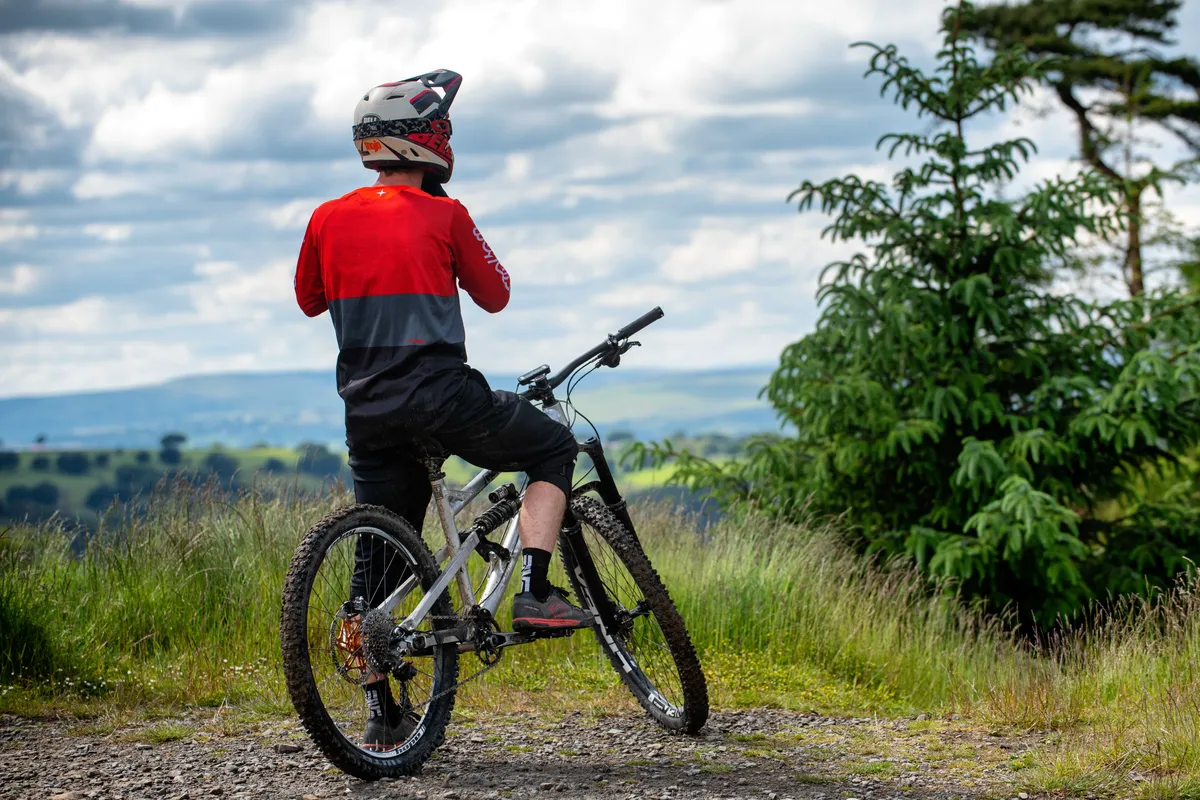
Drifting
Because of the greater level of grip offered by the 29in tyre, if you pair it with a 27.5in rear wheel, then the smaller wheel will have a tendency to break traction first, making the bike oversteer or drift.
Oversteer on a bicycle is relatively easily dealt with using counter-steering and is preferable to understeering, which will make the front lose grip before the back.
When this happens it often does so unpredictably and ends up with the rider on the floor. With oversteer, the rider knows where the slide will be coming from and can control it.
Bum clearance
Riders with a 29in rear wheel have 1.5in less clearance above the rear wheel. It might not sound like much, but for shorter riders, having that much less space to throw the bike around can make negotiating steep, tight sections of track that bit trickier.
Development time
Some internet pundits initially commented that teams might have been using a 29in wheel and fork on the front of their bikes because they didn't have a 29in-specific bike yet.
But this argument was undermined by the fact that Finn Iles and Loic Bruni had a 29in Specialized Demo ready to use at the 2018 Fort William World Cup, but chose not to ride it, instead turning up for the 2019 season on a similar bike but one deliberately built around a smaller rear wheel, with a shorter back-end and geometry optimised for a 29in front wheel.
In the world of enduro racing, during 2019's season we saw more pure 29ers take to the course – and win races – than we did mix wheel size bikes. It would be safe to speculate that enduro racers much preferred the faster-rolling, more stable 29in wheels on their shorter-travel, pedal-friendly bikes compared to their downhill counterparts on big-hitting rigs.
Although Martin Maes did take a mullet version of the GT Force to victory at the first three consecutive rounds of the 2019 Enduro World Series, but was later stripped of his wins due to a doping infraction.
Maybe, had Maes not been disqualified, the popularity of the mullet bike in enduro would have increased.
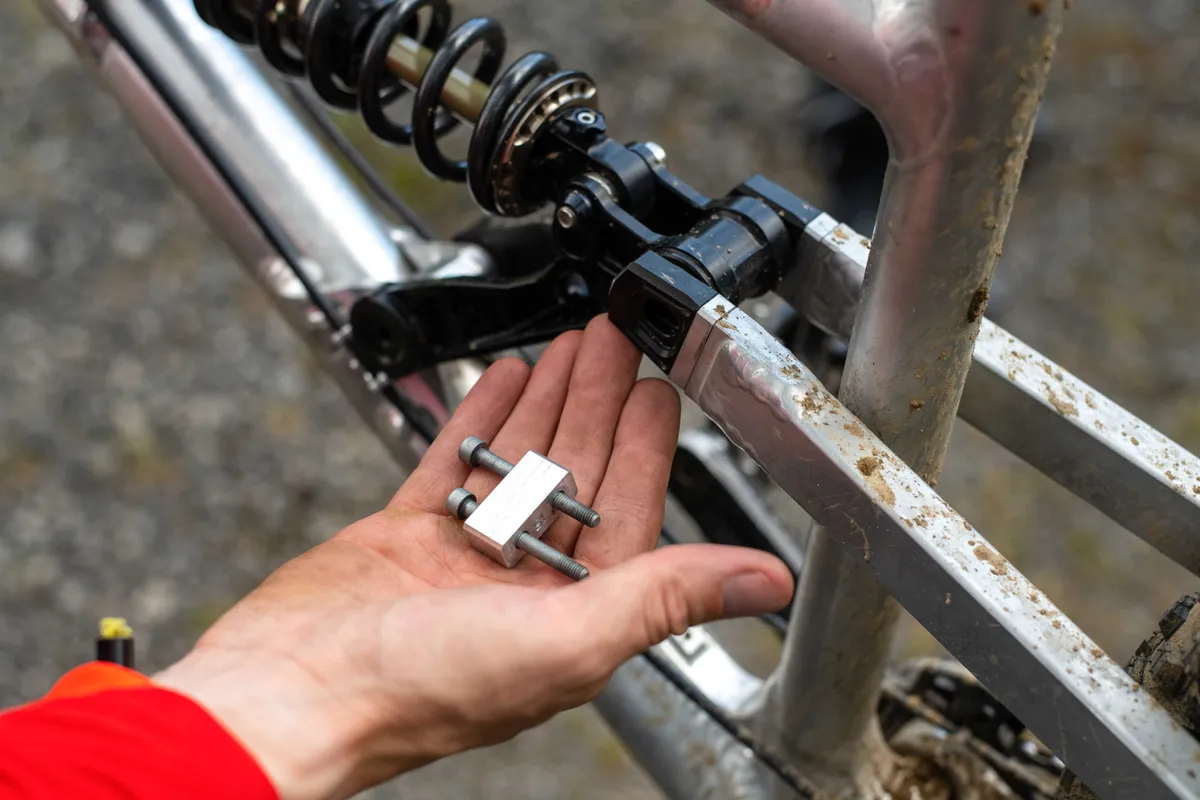
Geometry
When the 29er revolution came around, some of the early bikes had poor geometry with high bottom bracket heights and steep head angles.
Fitting offset shock bushings can help to overcome this, lowering and slackening out the geometry, but if this isn’t enough then fitting a 27.5in rear wheel drops the BB by roughly 13mm and slackens the head angle by 1.5 degrees.
While this is a smart move for the home mechanic on a budget, you can guarantee that some top EWS and World Cup downhill teams, with access to shortened shocks, angle adjust headsets and custom frames aren't doing this for a reason.
There must be another explanation for why they’re using the mullet!
Travel
It’s hard for downhill bike manufacturers to fit a 29in rear wheel into a frame while providing acceptable geometry and over 200mm of travel.
For example, the 650b Commencal Supreme V4.2 has 220mm of travel, whereas the 29er version of the bike with the same suspension design has just 200mm.
Mullet bike geometry and handling explained
If you want to delve deeper into the pros and cons of the mullet bike, there are also some geeky physics reasons why the mullet might be more than just fashion.
First, let’s look at the front axle height in relation to the centre of mass. When the front wheel hits an object which stops the bike, the mass of the bike tries to carry on forward, pivoting around the front axle and therefore flipping the rider over the handlebars.
On a bike with a 29in front wheel, the front axle is roughly 14.5in high (half the wheel diameter, give or take variations in tyre size). If the bike has a 27.5in rear wheel, the mass of the rear mech, cassette, rear hub and rear brake are all 0.75in below the front axle height, at 13.75in (half the diameter of a 650b wheel).

Lowering more of the bike’s mass below the front axle height creates a bike with greater stability, as more weight is driving the rider's feet toward the floor underneath the front wheel, instead of over the front axle. This effect should allow the suspension to work more effectively.
For those of you who are full-on nerds, here’s a brief insight into why bikes with asymmetric wheels feel unique to ride... The theory suggests that the inertia of the wheels creates a gyroscopic effect, which riders feel when cornering.
Having a larger rotating mass that spins more slowly (a 29in wheel goes through fewer revolutions than a 650b wheel over the same distance) on the front of the bike than the rear creates a bike that’s eager to turn and wants to keep turning tighter once the turn is initiated.
This could be the main reason why riders report that running two different-sized wheels takes some getting used to.
Mullet bike vs 29er | How I tested
Bike setup
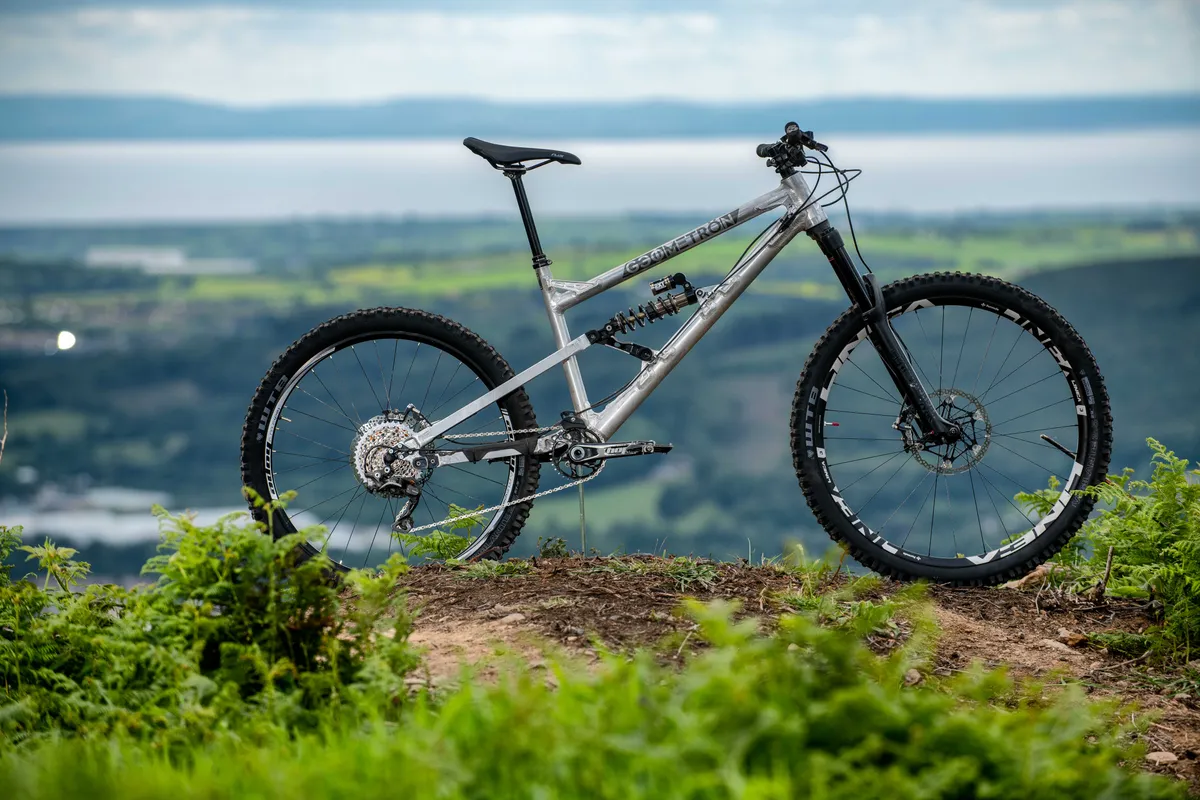
Many attempts to investigate the benefits of mullet bikes have simply involved taking a stock 29in-wheeled bike and putting a 650b rear wheel on it.
While at first this may sound like a fair test, in fact the geometry of the bike has been radically altered (head angle, BB height and more), so the results will not give an accurate comparison.
To make my test properly fair I deliberated carefully over bike choice, finally honing in on the GeoMetron G1, designed by Chris Porter of Mojo Rising and made by German manufacturer Nicolai.
I chose this bike because it has chips in the seatstays that can be added or removed to change the BB height in precise increments.
This allowed me to change the size of the rear wheel but keep the geometry of the bike identical. It also helped that Chris has experimented a lot with mullet bikes – and you won’t find a man more eager to test the unconventional anywhere in the bike industry!
Timing
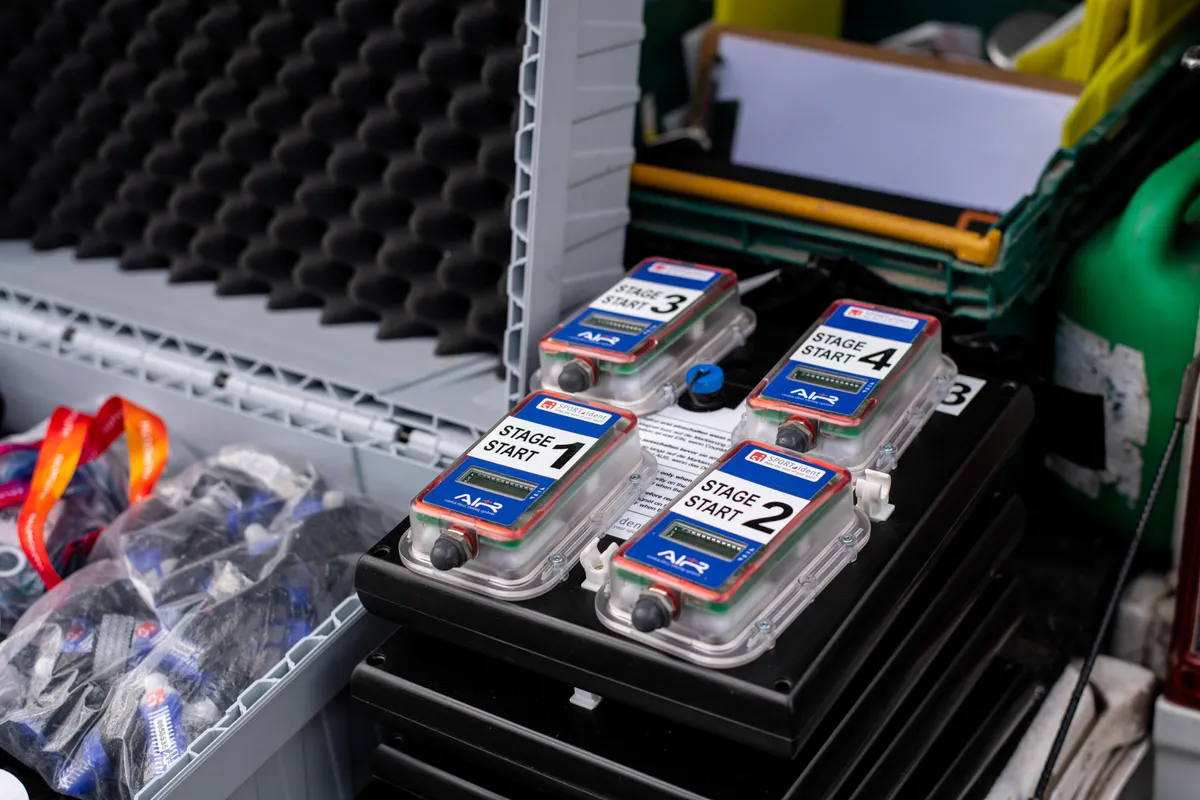
I timed runs on both setups using Mojo Rising’s transponder-and-matt enduro timing equipment, while also using a handlebar-mounted stopwatch to provide backup times.
The tracks I tested on
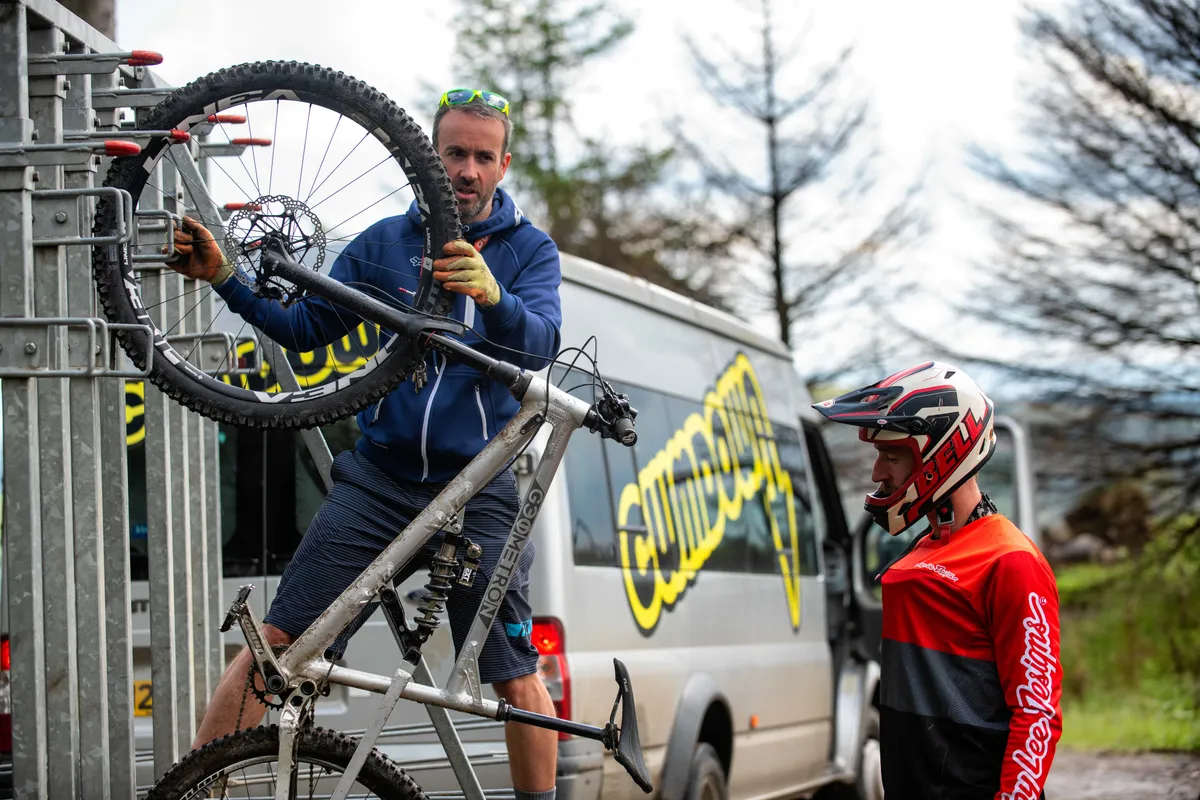
I did the majority of my testing on the Y Mynydd downhill track at Cwmcarn in South Wales. I wanted a track that would test all aspects of the bike’s handling, and it had to be somewhere where I could easily ride back-to-back runs.
In the world of UK downhill, Y Mynydd is one of the classics – first raced back in the late ’90s as part of the Dragon Downhill series, the track as we now know it was built in 2005 by Rowan Sorrell (the man behind BikePark Wales) and his firm Back on Track. The terrain is perfect for bike testing.
I broke the track into three sections: the first was long, rocky straights into sharp, low-speed corners; the second was fast, flowing singletrack with tight tree sections and more elevation drop; and the final section was smooth, wide open and very high-speed, with big jumps and tall berms.
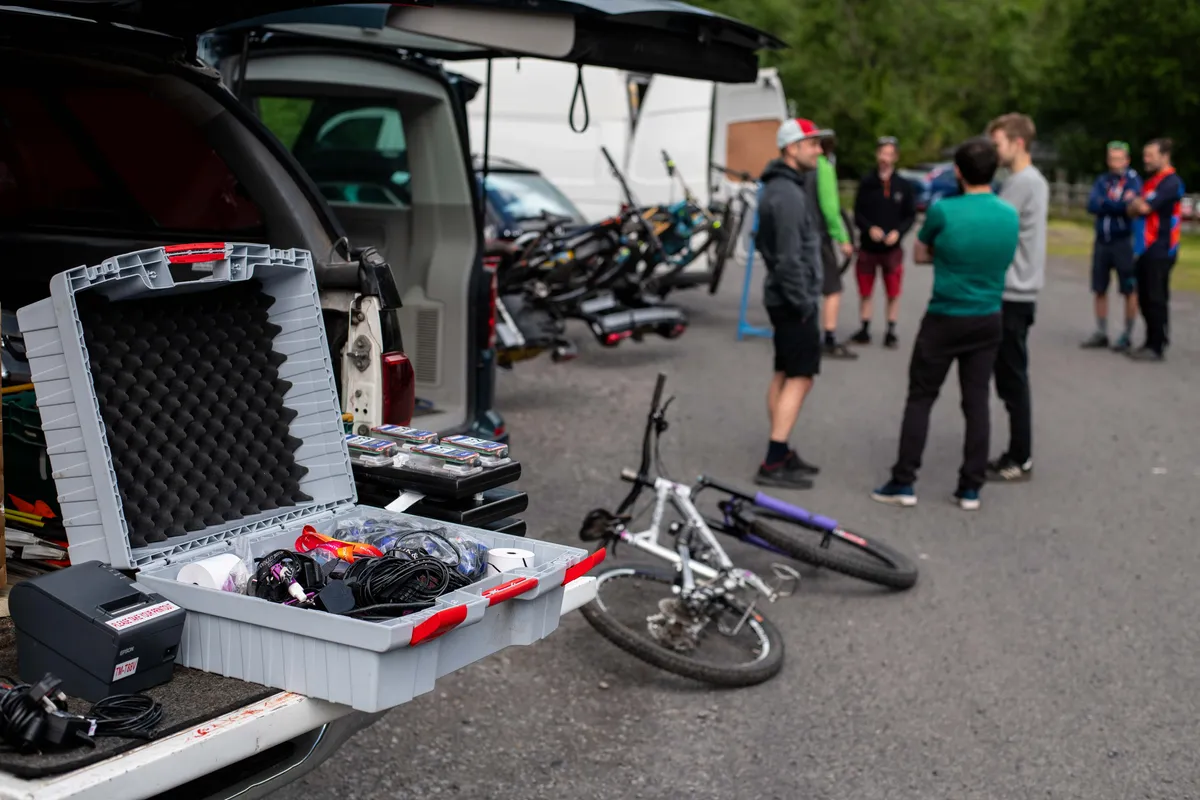
Using a timing system with race-level accuracy, I timed three runs against the clock on each setup.
Then, on a subsequent day, I timed more runs at Clyne Valley Woods in Swansea, to give an indication of performance on flatter, trail centre-type terrain.
The track I chose there is part of the main loop – a smooth blue/red-graded trail with some small jumps and mellow berms. Without a large elevation drop, the bike’s ability to carry speed would be highlighted here.
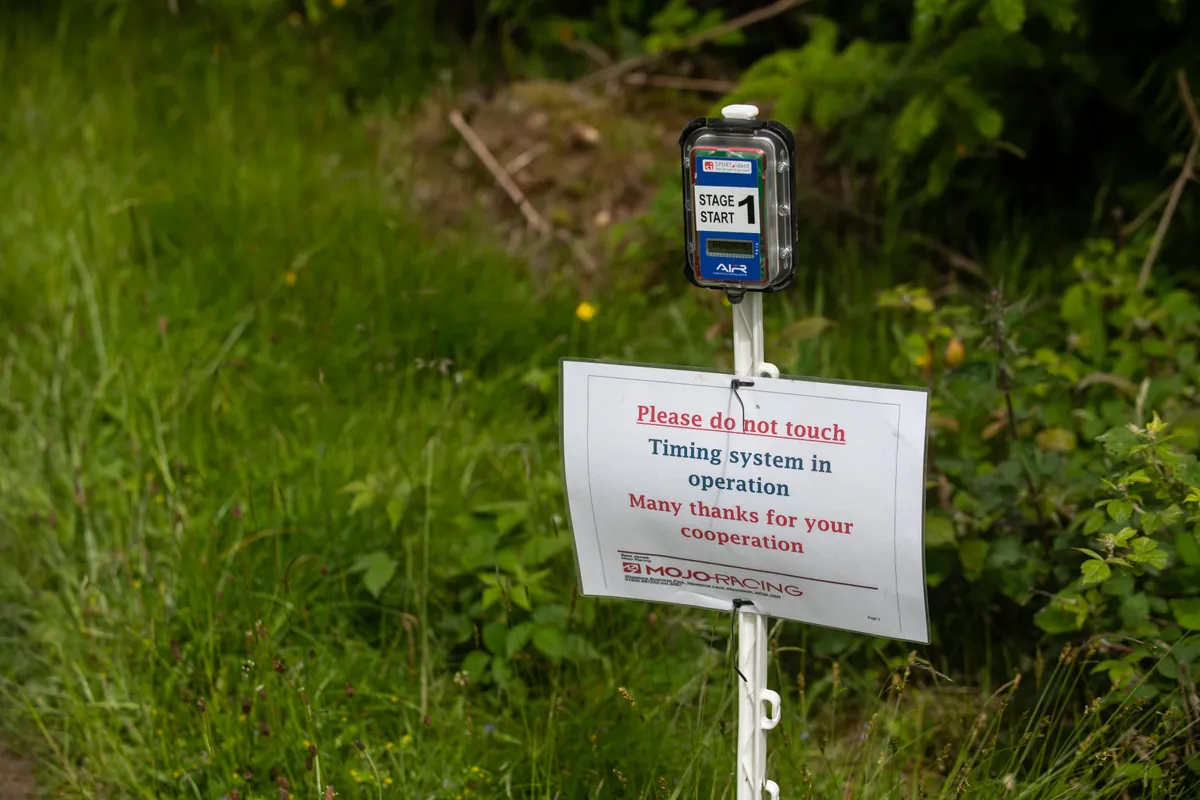
Accounting for first impressions
The importance of first impressions can be underestimated. As riders, we quickly adapt the way we ride a bike to compensate for any setup changes. With that in mind, I spent two weeks riding the G1 before the test, during which I experimented with both rear wheels.
Usually I ride a 650b downhill bike and a 29in trail bike, so don’t have a preference, but I found the mullet was more entertaining to ride. When switching wheels it took me a full run to get comfortable on the new setup.
More time dialling in the settings would probably have allowed me to go faster, but rider fatigue was starting to set in after six full-speed runs on the track!
Ride impressions | Out on the trail
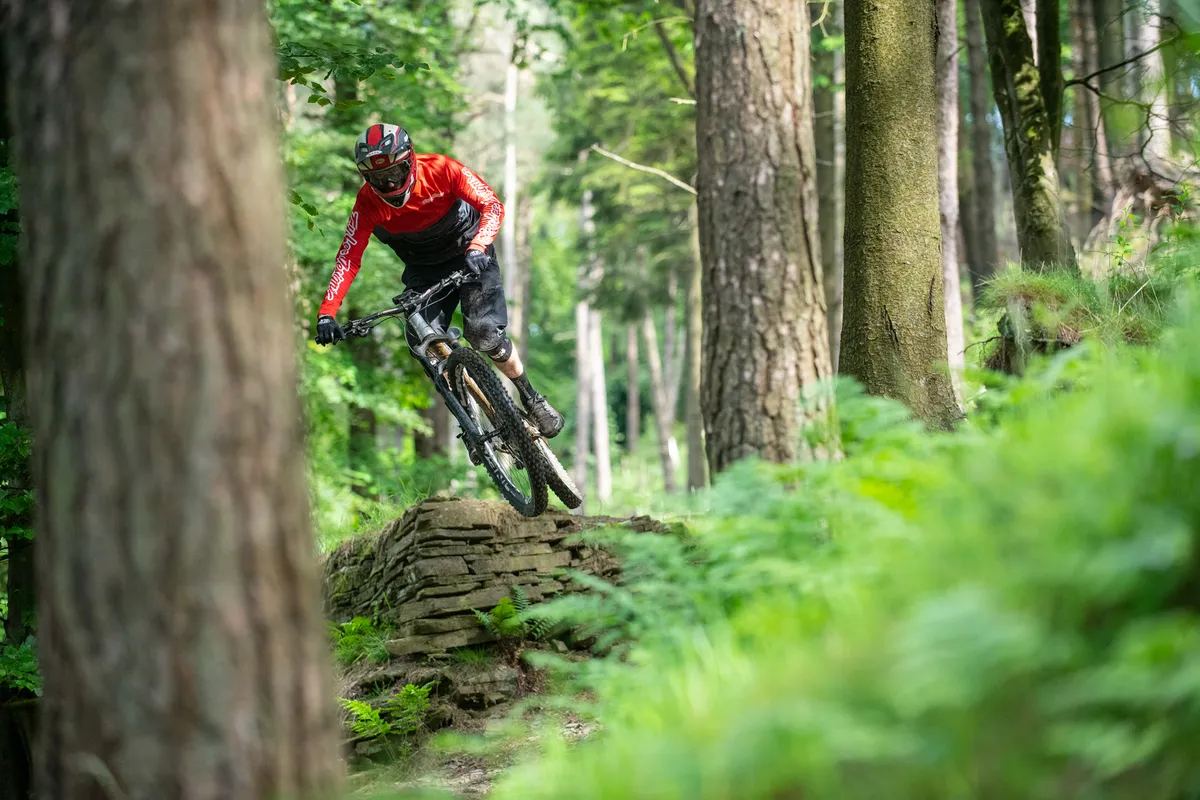
Before I delve into the timing results, how did each bike feel out on the trail?
The first thing I noticed with the 650b rear wheel was how eager the bike was to turn in mid-corner. This made it a joy in tight turns because I could turn the bike in sharply and stand it back up on the exit by counter-steering.
I found the 29er pushed on, required more effort and sometimes even a dab of back brake to turn tightly. At the limit of grip on loose gravelly surfaces, the 29er had a tendency to understeer, with the front end threatening to wash out, whereas on the mullet setup the bike would happily oversteer into a predictable slide. This encouraged me to exploit the available grip and take more risks.
Rocky straights and tight turns
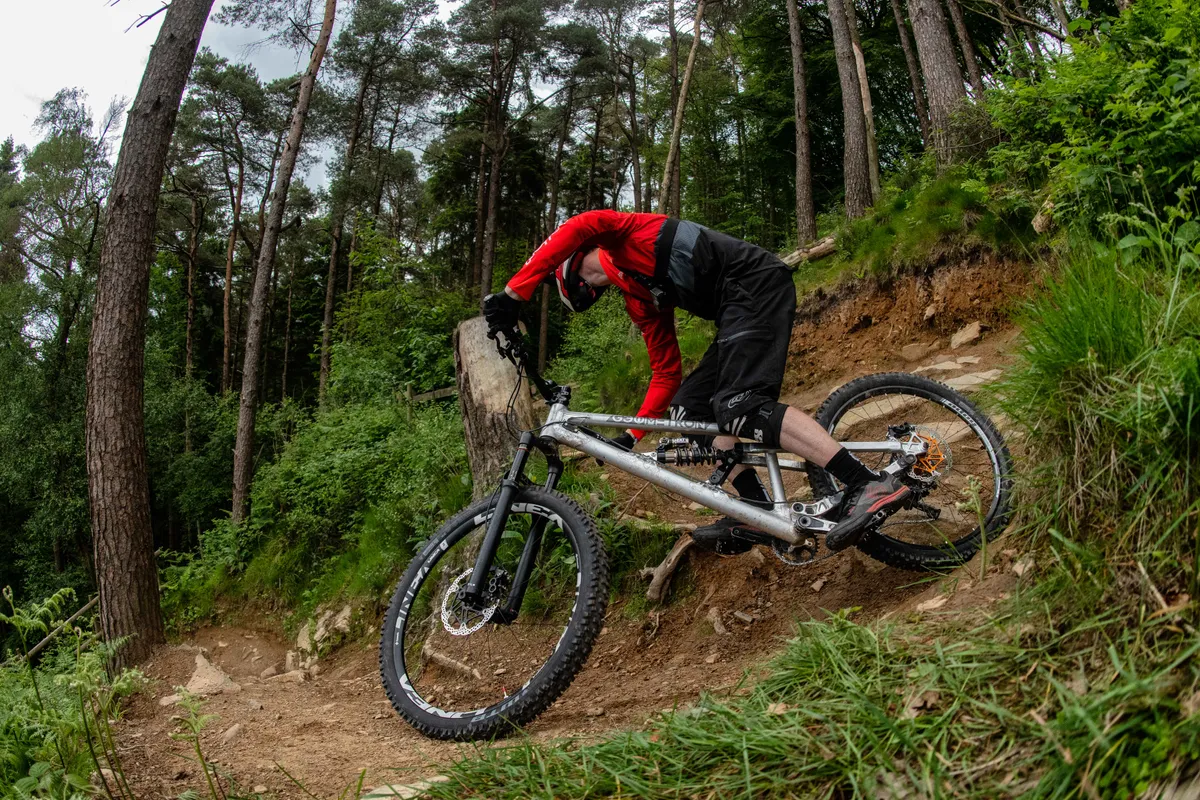
On Cwmcarn’s rough, rocky straights the full 29er setup felt more sluggish getting up to top speed, but carried speed noticeably better; ploughing through and accelerating over bumps rather than getting caught on square edges.
In the braking zones, it felt easier to get the mullet setup slowed down, possibly due to a lighter rear wheel, but maybe also due to the increased mass below the front axle height.
Flowing singletrack
On flowing singletrack, the 29er felt more comfortable at speed, possibly due to the larger BB drop below the rear axle and the larger rotating mass. However, it felt sluggish when changing direction, whereas I could hustle the mullet along with pinpoint accuracy.
Big jumps and berms
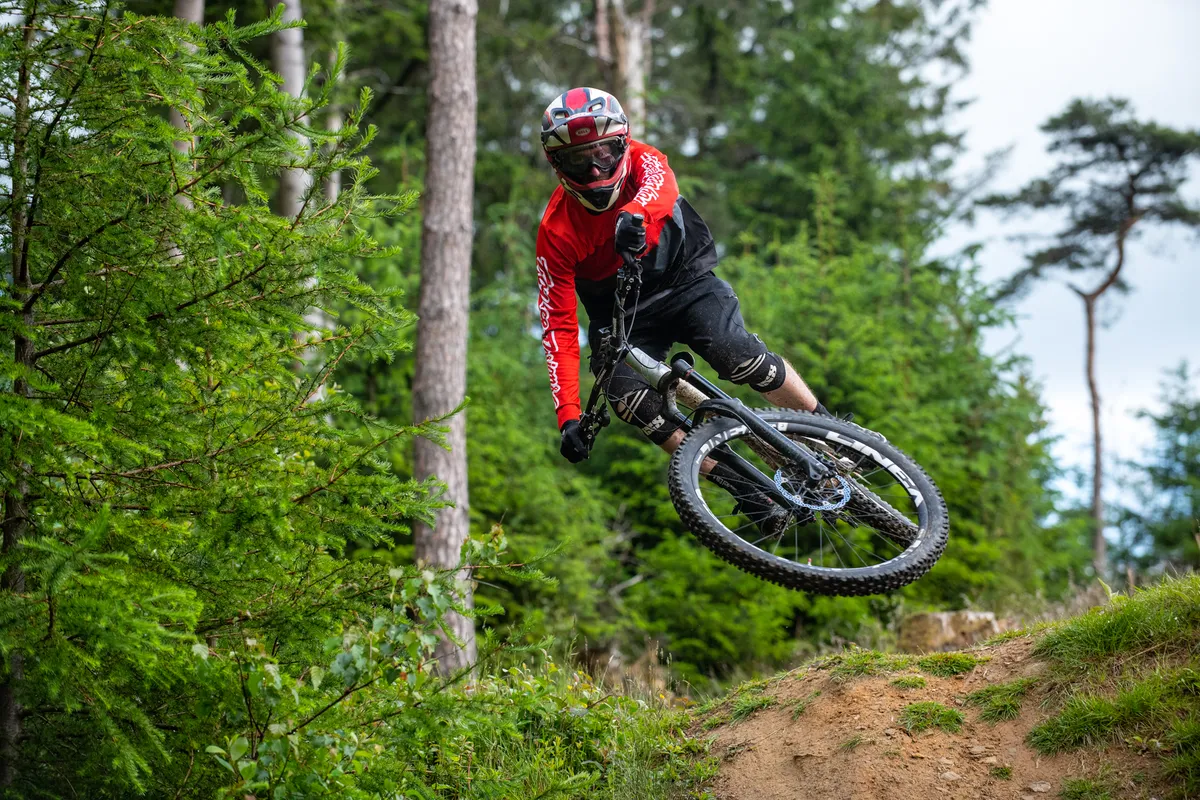
On the big jumps I could throw the mullet around more easily than the 29er, and the extra bum clearance meant I could use my body more.
In berms the 29er felt like it might understeer whereas the mullet was confidence inspiring to keep pushing harder.
Limitations of the test
I took every reasonable effort to ensure a fair and accurate test but naturally there are factors which may have affected the results of my real-world experiment.
Rider
- Fatigue – I was getting more tired through each run, which may have caused me to slow during the day
- Learning – On each run, I knew the track and the bike better
- Personal preference – I got on better with the mullet setup when throwing the bike around corners or in the air, though this may be atypical
- Height and weight – I weigh 64kg and I'm 5ft 10in, a bigger rider may have found a 29in rear wheel easier to ride than I did
- Effort – I pedalled out of the gate and then coasted the rest of the run, in order to prevent fresh/tired legs affecting results over the course of the day. Had I pedalled as normal in a usual run, it may have benefitted or hindered one setup over another
Bike
- Geometry – GeoMetron bikes have radical geometry, including a long wheelbase and a slack head angle. The fork also has reduced offset (compared to a regular 29er fork). These factors could have made the bike more suited to the smaller rear wheel’s quick handling than a bike with more traditional geometry.
Tracks
- Although I took every effort to choose a typical downhill track (with a variety of terrain) and a typical trail-centre section, it is possible that different tracks may favour one setup more strongly than the tracks I used.
Scores on the doors | The results
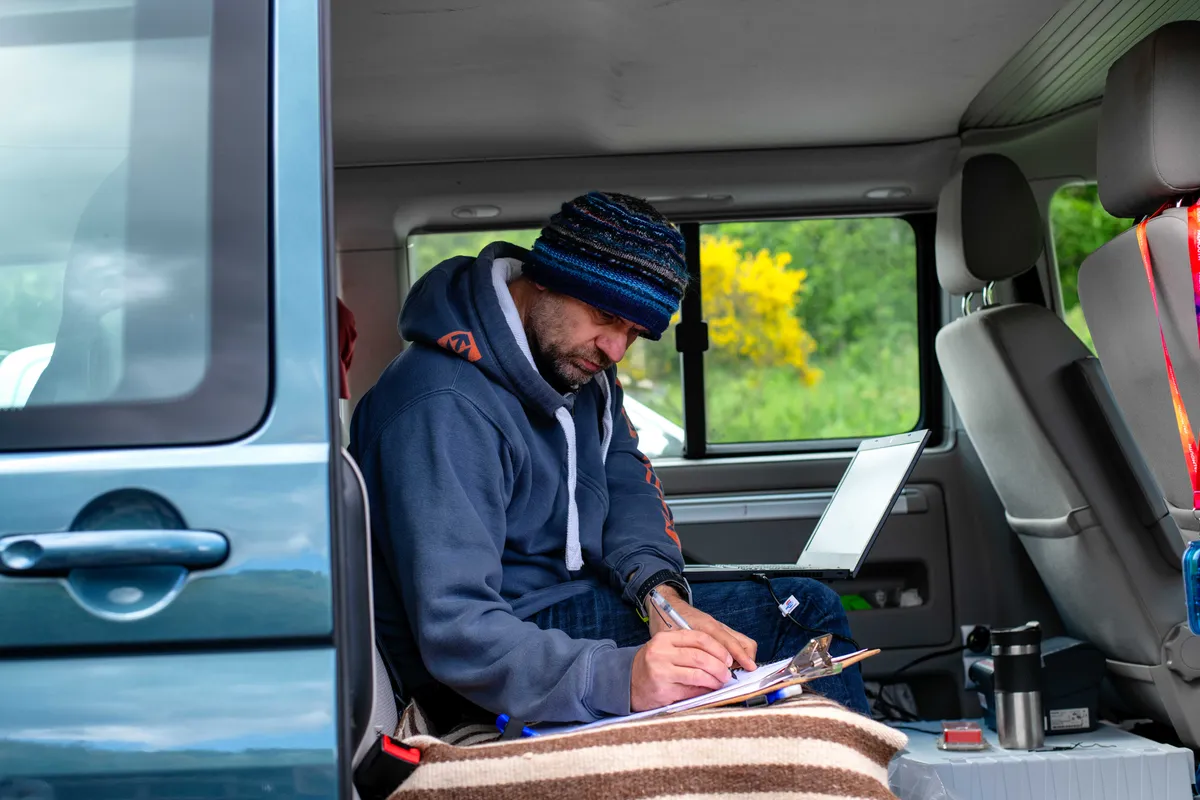
Test 1 – Cwmcarn Y Mynydd Section 1: Rocky
| Run | 29/29 | 29/27.5 |
|---|---|---|
| 1 | 58.91 | 58.32 |
| 2 | 58.14*** | 58.77 |
| 3 | - | 59.45 (raining) |
*** Fastest time
Test 1 – Cwmcarn Y Mynydd Section 2: Flowing singletrack
| Run | 29/29 | 29/27.5 |
|---|---|---|
| 1 | 39.99*** | 41.03 |
| 2 | 40.08 | 40.20 |
| 3 | - | 42.48 (raining) |
*** Fastest time
Test 1 – Cwmcarn Y Mynydd Section 3: Big jumps
| Run | 29/29 | 29/27.5 |
|---|---|---|
| 1 | 44.67 | 45.60 |
| 2 | 44.48*** | 44.78 |
| 3 | - | 46.38 (raining) |
*** Fastest time
Test 1 – Cwmcarn Y Mynydd Full run
| Run | 29/29 | 29/27.5 |
|---|---|---|
| 1 | 02:46.39 | 02:49.96 |
| 2 | 02:45.90*** | 02:46.80 |
| 3 | - | 2:52.05 (raining) |
*** Fastest time
Test 2 – Clyne Valley Smooth, flowing singletrack trail centre
| Run | 29/29 | 29/27.5 |
|---|---|---|
| 1 | 01:21.52 | 01:20.05 |
| 2 | 01:20.29 | 01:19.35*** |
*** Fastest time
So which setup was faster? 29er or mullet bike?
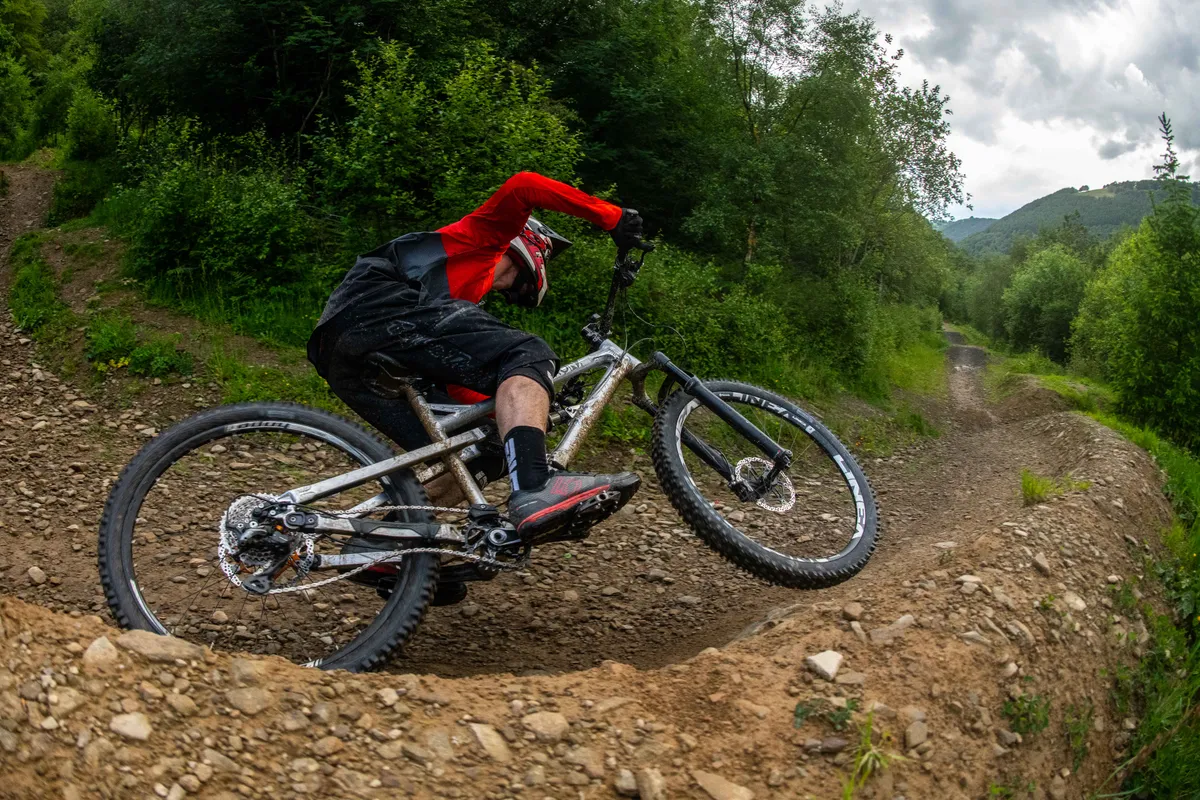
Well, the times were extremely tight, so it’s difficult to announce a definitive result but I can draw a number of conclusions from my testing.
The 29in bike was faster on the DH track but only by around 0.5 per cent, while the mullet setup was speedier at the trail centre but still only by 1 per cent.
Perhaps the advantages of the 29er on rough terrain were more noticeable on the DH track and the mullet’s benefits in tighter turns made a difference on the flatter, twisty trail?
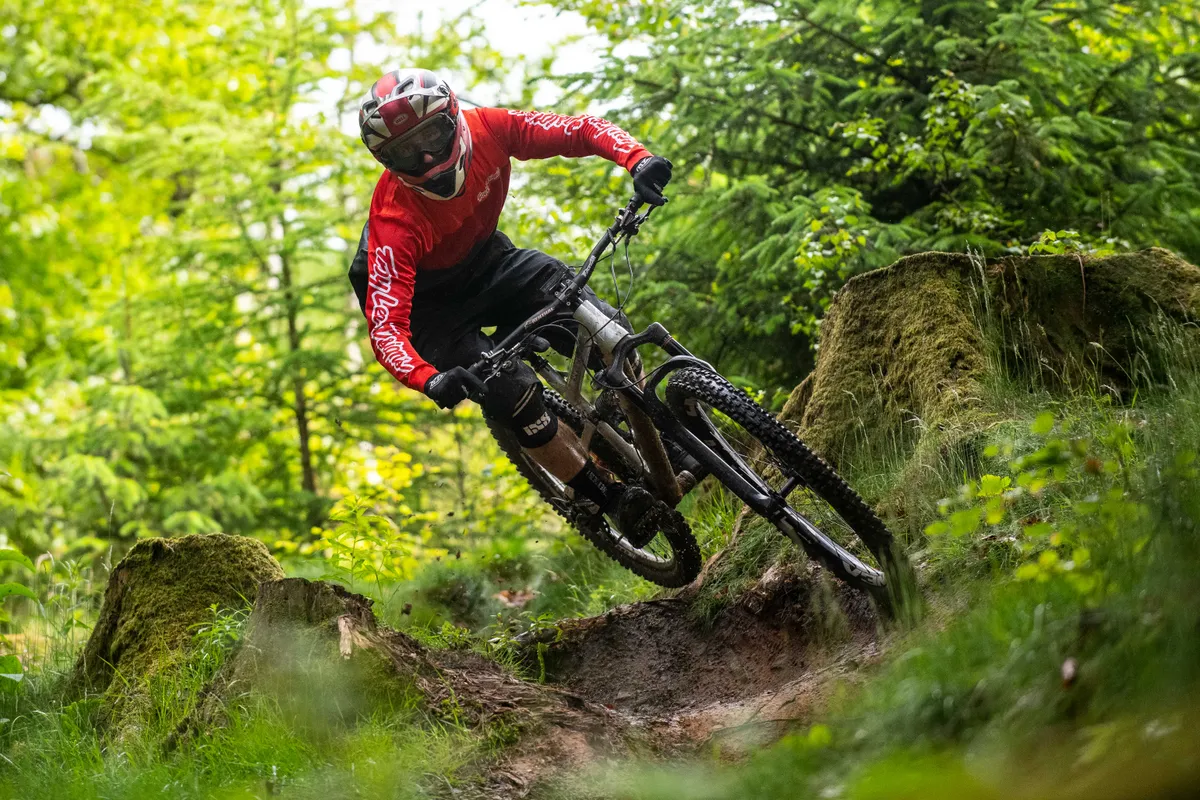
Taller riders, or riders with varying styles, may produce different outcomes, but for me the benefits of the mullet setup outweighed the ploughing ability of the 29er.
The importance of personal preference is already evident in the Enduro World Series and World Cup DH, where some riders are running 29in wheels and others are bringing back the mullet.
Standing at 5ft 10in tall, the mullet bike's extra clearance over the rear tyre was also useful when muscling the bike around. Most importantly, the confident drifting encouraged by the mullet has now made it my chosen setup.

With the times of our test so tight, I ultimately have to conclude by saying that the fastest setup depends on the track and riding style – for me, the 29er was better at ironing out the rough stuff but the mullet had an edge in terms of manoeuvrability and manageable handling.
Nicolai G-1 GeoMetron test bike specs
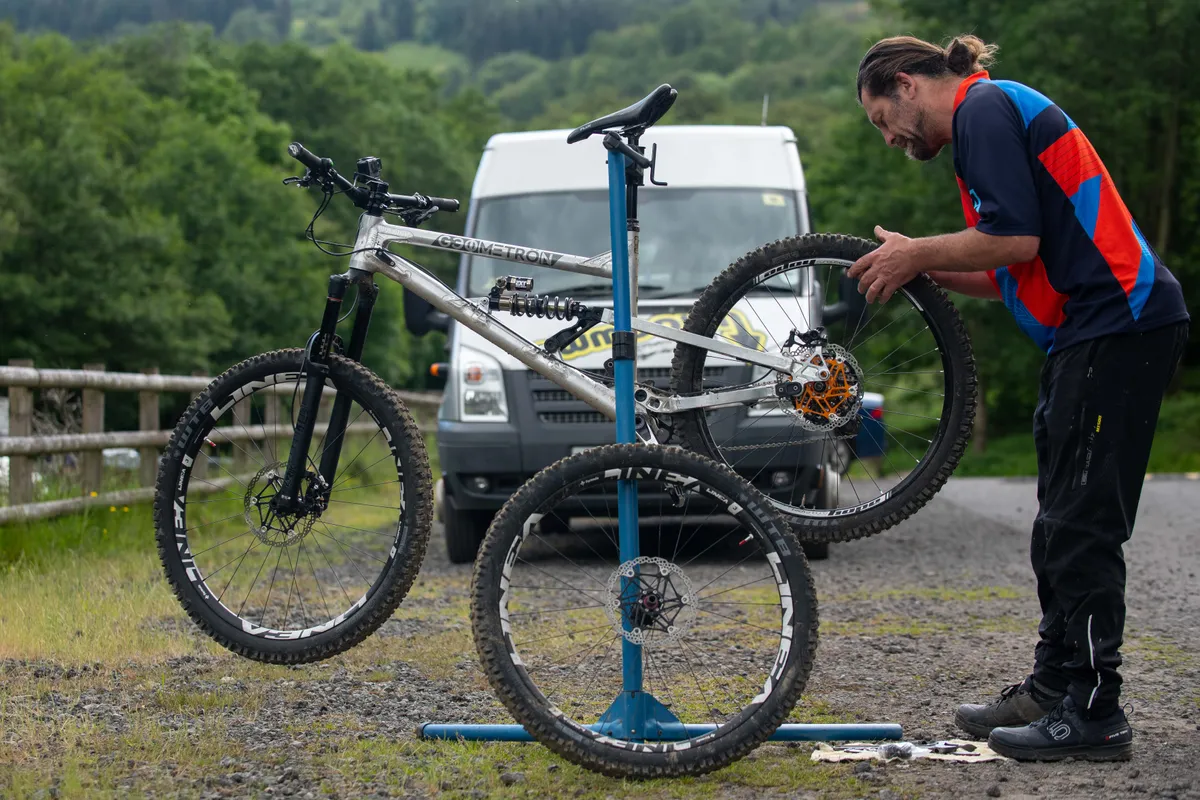
- Frame: Nicolai G-1, Large
- Shock: EXT Storia V3 Mojo addition
- Fork: RockShox Lyrik 29in, 44mm offset (170mm travel)
- Tyres: WTB Vigilante 2.35in, High Grip, Tough
- Wheels: Formula Linea 2 29in and Hope Enduro 27.5in
- Bars: Renthal 800mm
- Stem: Hope 35mm
- Crank: Hope 170mm
- Drivetrain: Shimano XTR
- Pedals: Hope
- Reach: 515mm
- Head angle: 61 degrees
- Bottom bracket height: 445mm
- Chainstays: Shortest setting
- Travel: 155mm
Thanks to
Chris Porter and the team at Mojo Rising for the loan of the bike, use of their timing system and their technical advice. WTB tyres allowed us to have identical tyres in both wheel sizes. Also, thanks to Darrell at Cwmdown for providing private uplifts. If you want to ride Cwmcarn then head over to its website to book on.
